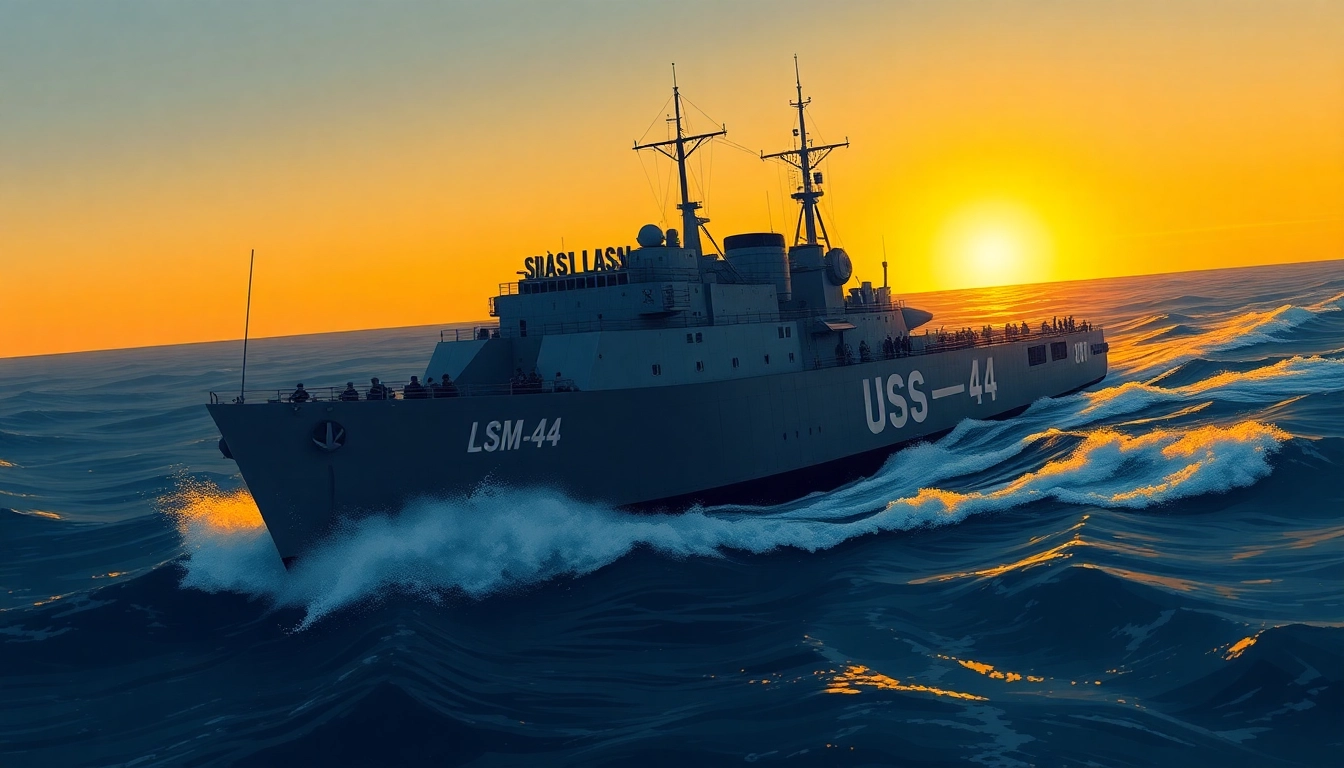Introduction to lsm44: A Historical Overview
The term lsm44 primarily refers to USS LSM-44, a Landing Ship Medium (LSM) vessel of the United States Navy. This ship holds a significant place in naval history due to its unique design and crucial role during World War II. The LSM class was designed to transport and land tanks, vehicles, and troops directly onto hostile shorelines, a task pivotal to successful amphibious operations.
What is LSM44?
LSM-44 was launched on March 15, 1944, and served with distinction throughout the war and beyond. This class of vessels, characterized by their shallow draft and strong hulls, enabled them to approach the beach and offload cargo directly onto shore.
Key Historical Points of LSM44
USS LSM-44 was constructed at the Brown Shipbuilding Company in Houston, Texas, and saw extensive action in the Pacific theater. Key historical milestones for LSM-44 include its involvement in the assault on Iwo Jima and Okinawa, where it delivered vital supplies and supported American forces in those critical engagements.
Importance in World War II
The strategic role of LSM-44 during World War II cannot be overstated. As amphibious assaults became integral to military strategy, ships like LSM-44 facilitated the successful transport of troops and equipment to the front lines. The efficiency of landing ships like LSM-44 directly contributed to the victories in numerous campaigns across the Pacific.
Specifications and Characteristics of LSM44
Design Features of the Landing Ship Medium (LSM)
LSM-44 was designed with several distinctive features: a length of around 203 feet, a beam of 34 feet, and a draft of approximately 6 feet. These specifications allowed the ship to operate effectively in shallow waters, which was crucial for beach landings. Moreover, it had a displacement of 1,300 tons and was equipped with a bow ramp that facilitated the rapid disembarkation of troops and equipment.
Technical Specs: What Makes LSM44 Unique?
LSM-44 had a maximum speed of 12 knots and carried a crew of approximately 50 men. Its armament included a 40mm gun and several .50 caliber machine guns for defense against hostile aircraft and surface threats. The design incorporated a flat bottom hull that made it ideal for beach landings and allowed for a high degree of maneuverability.
How LSM44 Compared to Other Ships
When compared to other landing craft of its time, LSM-44 excelled in versatility and capacity. Unlike smaller landing craft, it could carry larger loads, including medium tanks and heavy watercraft. This unique combination of size, speed, and cargo capacity enabled LSM-44 to support various combat missions that smaller vessels could not undertake.
Notable Deployments and Missions
Major Operations Involving LSM44
LSM-44 was involved in several major operations, most notably during the Okinawa campaign in 1945. The ship participated in the landings that were part of Operation Iceberg, delivering troops and supplies that were crucial to the campaign’s success. During its service, LSM-44 was instrumental in providing direct support and logistics for other naval operations.
The Role of LSM44 in Post-War Operations
After World War II, LSM-44 continued to serve in the Pacific, participating in occupation duty and assisting in humanitarian missions. The ship was assigned to the occupation of Japan and operated in various capacities until it was decommissioned in the mid-1950s.
Infographic: Timeline of LSM44 Deployments
To illustrate the significance of LSM-44, the following timeline outlines its key deployments:
- March 1944: Launched and commissioned into service.
- February 1945: Participated in the assault on Iwo Jima.
- April 1945: Supported landings during the Battle of Okinawa.
- September 1945: Assigned to post-war occupation duty in Japan.
- 1955: Decommissioned and transferred to the reserve fleet.
The Legacy of LSM44 in Modern Culture
Memorials and Tributes to LSM44
Today, the legacy of LSM-44 lives on. Various memorials dedicated to its crew and the contributions of similar vessels can be found throughout the United States, highlighting the important role played by these ships in securing freedom during wartime.
How LSM44 Influences Today’s Naval Strategies
The operational capabilities demonstrated by LSM-44 have influenced modern naval strategies. The principles of amphibious warfare showcased by its missions have been integrated into the training and planning of current naval forces, ensuring that new generations of sailors learn from the successes and lessons of past engagements.
Interactions with Veterans and Their Families
Veterans of USS LSM-44 often share their experiences through reunions and veterans’ organizations. These gatherings serve to honor their service and maintain a connection to their past, allowing for the sharing of personal accounts that enrich the history associated with LSM-44.
Future Reflections on LSM44
Preserving the History of LSM44
Efforts to preserve the history of LSM-44 include digital archives and exhibitions dedicated to naval history. These initiatives aim to educate future generations about the vessel’s service and the broader context of its operations during World War II.
Educational Programs Featuring LSM44
School programs and educational curricula often include segments on naval history. By featuring LSM-44 and other significant ships, educators can provide students with insights into the maritime strategies used during historical conflicts.
Community Engagement and Awareness Initiatives
Community organizations have also begun initiatives to engage the public in discussions about the importance of naval history as a part of local heritage. Through workshops, lectures, and museum displays, the significance of ships like LSM-44 continues to resonate with the community.



